You’ve heard the proverbial saying that all publicity, even negative publicity, is good publicity. This article is a cautionary tale against that. What works for Hollywood stars doesn’t translate in business where a good brand reputation and a positive public perception (emphasis on “good” and “positive”) are critical to success.
💡 Read Brand Reputation 101: Monitoring, Analysis, and Management Tools
So, how the company responds to a PR crisis determines whether the brand bounces back or suffers lasting financial and damaged reputation.
That said, here are my ten top PR crises and how the brands handled them so you can learn from their experiences:
1. EasyJet and broken seats [2019]
In August 2019, a passenger on an EasyJet flight from London to Geneva tweeted a photo of a woman sitting on a backless seat.
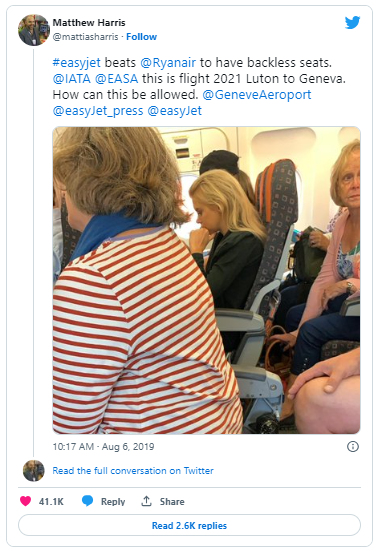
The tweet went viral with over 40,000 likes and 20,000 retweets. The European Aviation Safety Agency and International Air Trade Association were tagged in the post.
EasyJet’s response was quick (15 minutes) but missed the mark. They asked the poster to delete the picture.
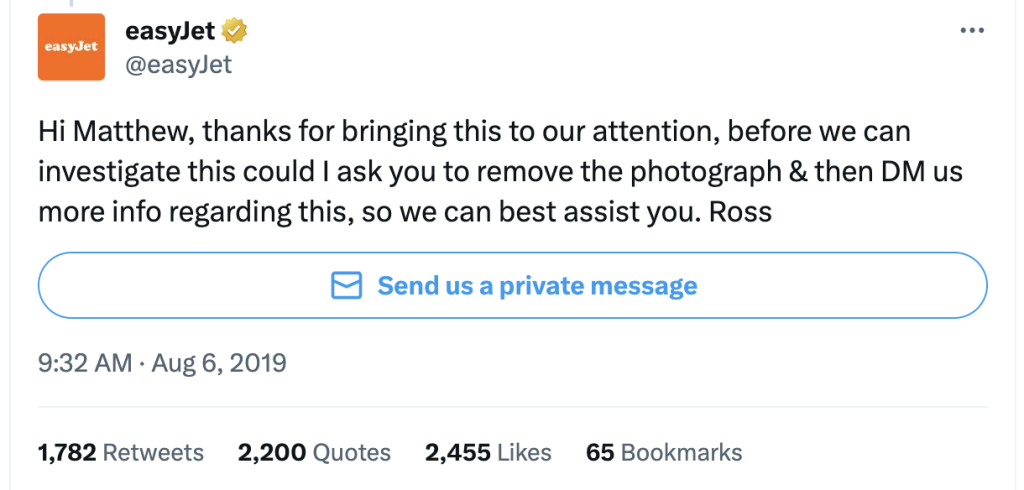
The response understandably angered Twitter users, who criticised the brand for its handling of customer issues and negative reviews.
The airline’s spokesperson said EasyJet complies with all safety guidelines, and the passenger did not use the inoperative seat during the flight.
Key takeaway: EasyJet turned a minor issue into a top PR crisis with how they responded. Asking the poster to remove the picture before investigating the issue was a grave misstep. Never do this is my best advice as they won’t do it anyway.
2. Tesla cybertruck glass demo [2019]
Tesla’s live demonstration of its shatterproof window technology didn’t go as planned. During the unveiling of the cybertruck, the head designer threw a metal ball at the truck’s windows which cracked.
Founder Elon Musk later explained the combined impact of the metal ball and a sledgehammer on the door (tested before the window demo) caused the failure.
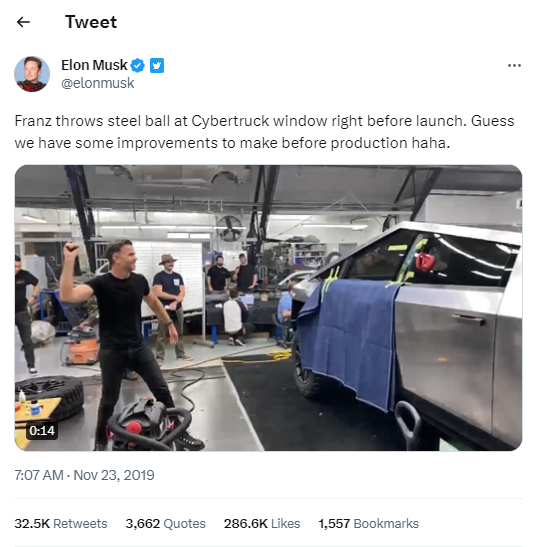
Two days after the unveiling, Elon Musk posted a tweet of a successful demonstration of the steel ball test and admitted improvements were necessary before production.
The tactic worked. While some Twitter users held the live demonstration up as a cautionary tale, others took a more optimistic view. They suggested the cybertruck demonstrated its durability over mainstream trucks.
Key takeaway: Overall, the demonstration was a net positive for Tesla. Like the brand, if you find yourself in these kinds of situations, respond with humour and humility. I would also advise you seek an agency with a specialism in PR services so you can leave it to the experts to issue the right statements reflecting your values at the right moment.
3. H&M and the monkey sweatshirt controversy [2018]
Swedish fashion brand, H&M, came under fire for an ad featuring a black child in a green hoodie that read ‘coolest monkey in the jungle.’ The ad sparked outrage and accusations of racism. Celebrities denounced the brand. They included The Weeknd, who ended his relationship with the brand.
People pointed out the incident was unfortunate since diversity and inclusion were supposed to be part of the brand’s core values.
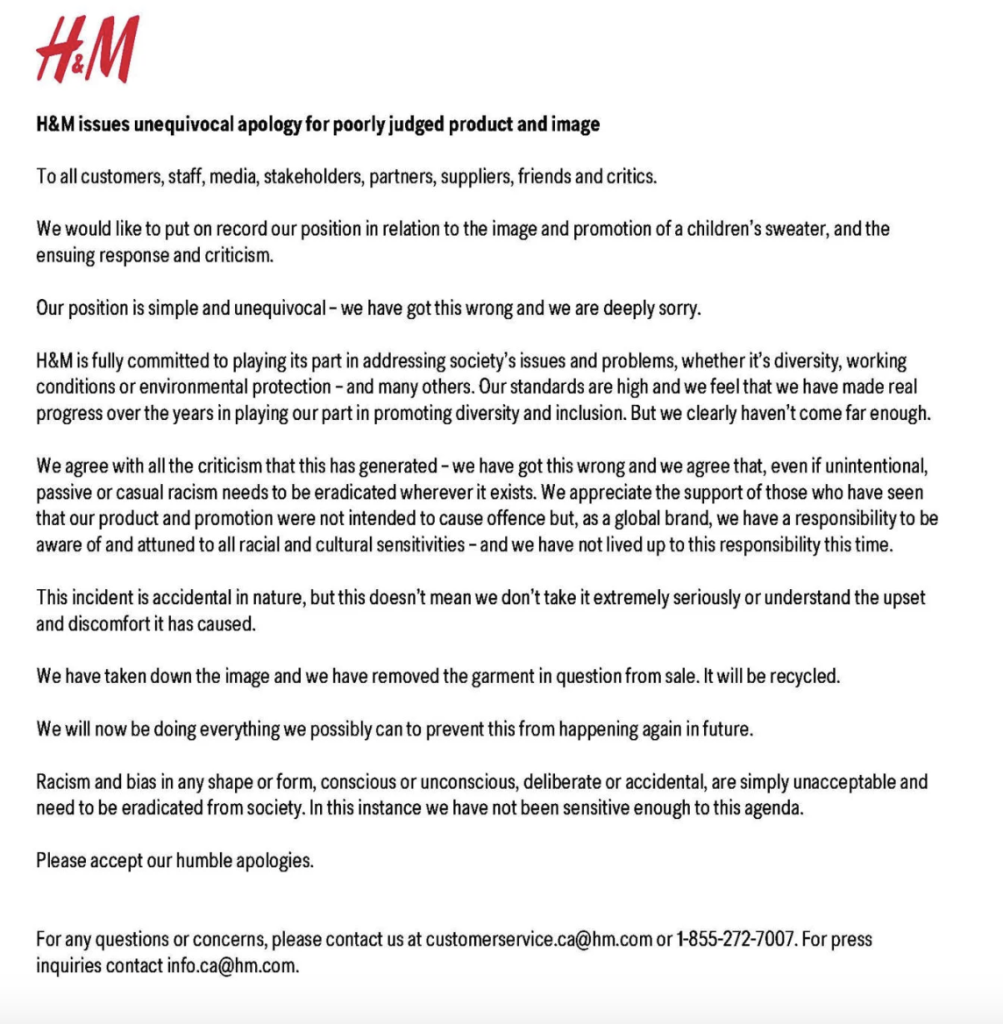
H&M apologised and removed the sweatshirt from its stores and websites. They also created the global head of diversity and inclusivity position. This is to ensure the brand incorporates the different cultural views of its global sales markets.
Key takeaway: The incident highlighted the importance of cultural awareness for global brands, especially in the age of viral social media posts.
4. Dolce & Gabbana Chinese ad campaign [2018]
Another brand that came under fire for racism was Dolce & Gabbana. To promote a runway show in Shanghai, the brand released three ads showing a Chinese model attempting to eat Italian food with chopsticks.
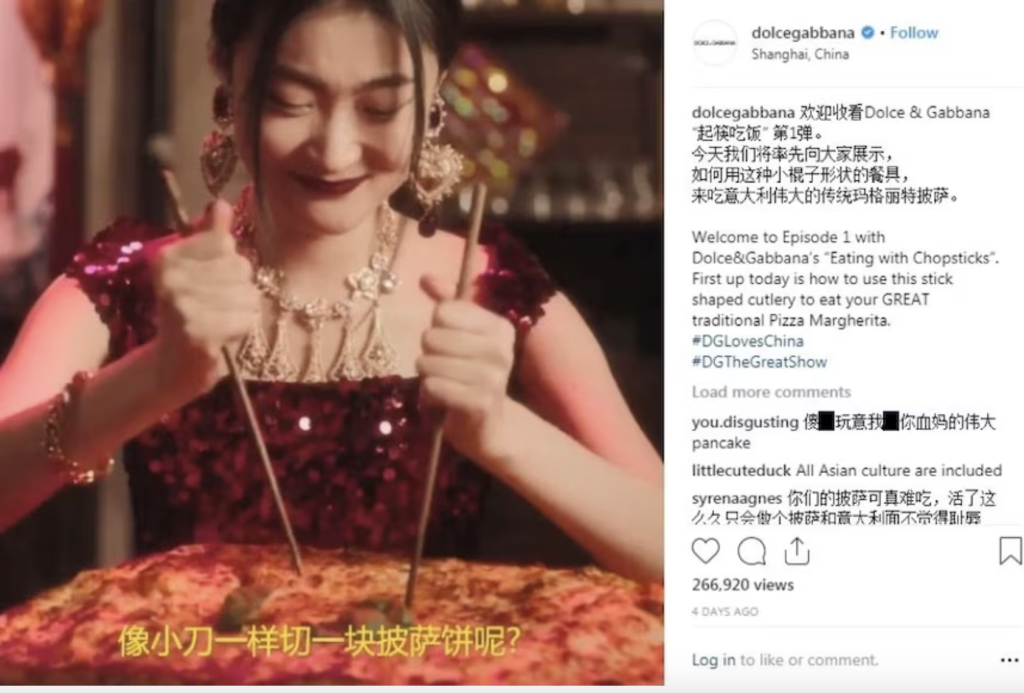
This Instagram caption disparages Chinese culture while elevating Italian culture. Note the ironic #DGLovesChina.
Things escalated when Stefano Gabbana allegedly responded to the backlash with derogatory remarks about China.
The fallout was swift, severe, and sustained. The Shanghai show was canceled, Chinese celebrities terminated their contracts, and major stores stopped carrying the brand’s products. To date, D&G hasn’t been able to sign an endorsement deal with Chinese celebrities.
Key takeaway: While D&G removed the ads and publicly apologized, the private messages by one of the founding designers negated those efforts. When faced with backlash over a wrong move, quickly apologize and don’t make justifications for your actions.
5. #DeleteUber campaign [2017]
#DeleteUber trended on social media when the logistics company dropped its surge pricing at JFK International Airport. Now, you may wonder why this move was met with calls for a boycott. Well, Uber announced it during a New York taxi protest of President Trump’s Muslim travel ban. That just meant passengers affected by the taxi protest could just book an Uber for transport instead.
Many saw Uber’s move as opportunistic and condoning xenophobia. It didn’t help that CEO Travis Kalanick was an advising member of Trump’s Strategic and Policy Forum.
The hashtag showed posts, like the one below, of customers deleting their Uber accounts and the reason behind it.
In response to the campaign, Uber shared an email it sent to its employees.
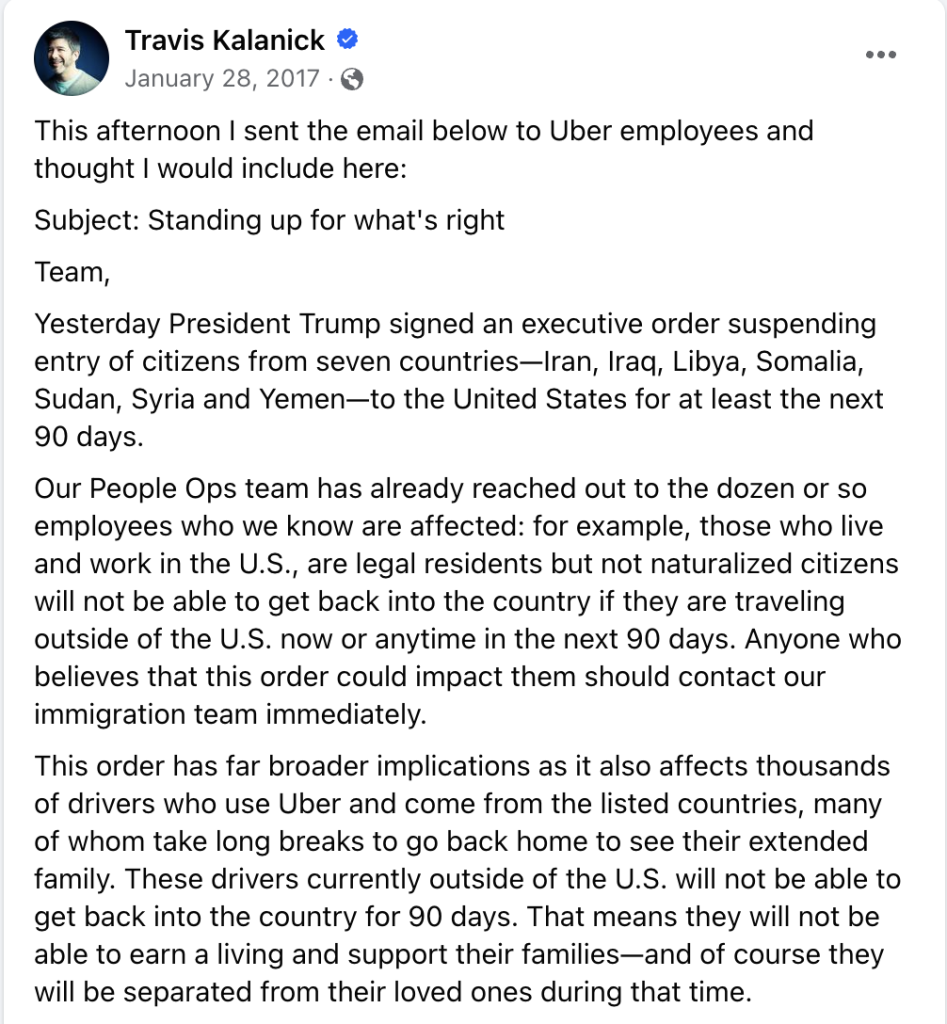
The CEO condemned the travel ban and promised financial compensation to drivers affected. He even stepped down from his advisory role. However, the damage was already done, and over 200,000 users deleted their accounts.
Key takeaway: The incident was an unfortunate misunderstanding because Uber disabled surge pricing to avoid appearing opportunistic. Uber could have appeased the outraged public had it said this straight. Don’t beat around the bush. Explain the situation as it is if there has been a misunderstanding.
6. Adidas and email marketing scares [2017]
Email is one of the best marketing channels for many businesses. With automation, email finder and segmentation tools, marketers can send bulk messages to various customers. Most of the top PR crises mentioned here stem from social media, but this crisis proves that email marketing isn’t immune to viral outrage.
Adidas came under fire in 2017 after it sent participants of the Boston Marathon a congratulatory email. The subject line read: Congrats, you survived the Boston Marathon.
You may or may not remember the 2013 Boston Marathon bombing. Three people died, and hundreds were injured. People remembered and took to social media to remind the brand.
Many criticized the email marketing campaign as insensitive.
Adidas took responsibility for the mistake and apologized within hours of sending the email. It repaired its damaged reputation the following year with an innovative video campaign, ‘Here to Create Legend,’ creating personalized films for 30,000 runners.
Key takeaway: Adidas managed the PR crisis correctly. They apologised, took responsibility, and followed up with a brilliant campaign to make up for the previous blunder.
Take inspiration from Adidas if you find yourself in a similar situation. This is also a reminder that you need to monitor all your marketing strategies closely. Things tend to spill over to social media and can result in full-blown PR crises if not handled correctly.
7. United Airlines scandal [2017]
In April 2017, shocking footage of the forcible removal of a passenger from a United Airlines flight went viral. Flight 3411 was overbooked, and the airline agents asked for volunteers to take a later flight to accommodate United employees.
When no one took up the offer for flight vouchers, the airline selected four passengers for removal. Three complied, but Dr. David Dao didn’t. He was violently removed from his seat and dragged unconscious off the plane. The incident itself was outrageous, but what caused the uproar was the brand’s response.
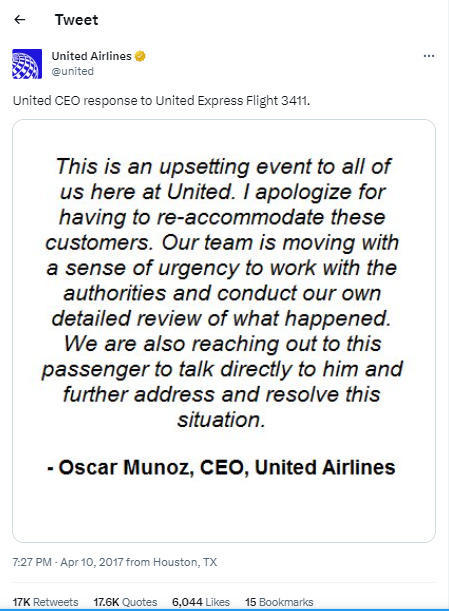
In a tweet, CEO Oscar Munoz apologised for the incident. However, his choice of words met with heavy criticism, and he had to issue another public apology.
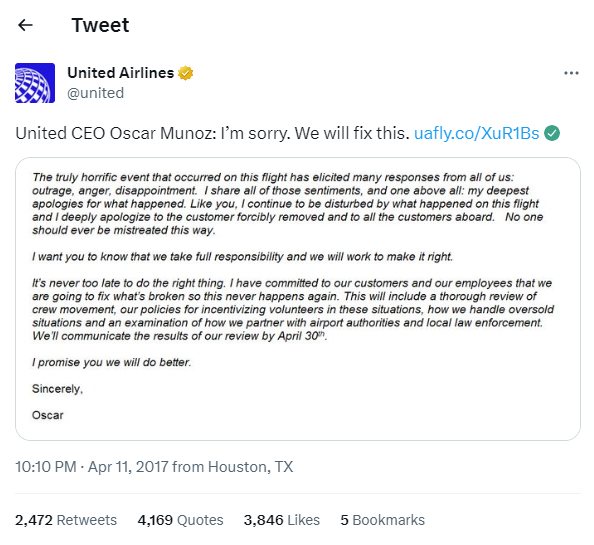
The tone and language in the second statement are markedly different from the first, reflecting the correct sentiment at the heart of the issue.
United Airlines was coming out of another scandal involving its dress code. While they were able to bounce back from ‘leggingsgate,’ the consequences of Flight 3411 were far-reaching. The company’s stock dropped by $1.4 billion, and the incident sparked industry-wide changes around overselling policies and practices.
Key takeaway: Crisis management communication can inflame or defuse negative sentiment. A PR crisis isn’t the time for corporate speak. Apologies should be sincere, demonstrate accountability and prioritize public interest. Fortunately, generative AI technology can help you write PR statements that are authentic and on-brand.
8. Wells Fargo fake accounts scandal [2016]
In September 2016, Wells Fargo, the fourth largest bank in the U.S., was fined $185 million for creating fraudulent bank and credit card accounts.
Investigations by the three government agencies found that employees created millions of accounts to meet the bank’s aggressive sales expectations. Furthermore, they charged various fees for accounts customers didn’t know existed.
Thus began a series of investigations and legal action by regulatory and private bodies, including a Congressional hearing. CEO John Stumpf and head of banking Carrie Tolstedt were forced to resign, and the bank agreed to a $3 billion settlement with the U.S. Department of Justice and the Securities Exchange Commission (SEC). Additionally, the Federal Reserve imposed growth restrictions until the bank improved its checks and balances.
To win back customer and investor confidence, Wells Fargo launched two advertising campaigns and a logo redesign even as fines and penalties accumulated. It wasn’t until CEO Tim Sloan stepped down that the brand’s approval rating improved from 58% to 73%.
Key takeaway: Bear in mind that today’s customers don’t care about superficial changes (like a new logo) to address a PR crisis. They want meaningful changes such as transparency, risk control, and changes in company culture.
9. Volkswagen emissions scandal [2015]
The Volkswagen emissions tests scandal, dubbed ‘dieselgate,’ broke in September 2015 when the U.S. Environmental Protection Agency (EPA) issued the German automaker a violation notice of the Clean Air Act.
The EPA accused Volkswagen of installing emissions software that was fully compliant during testing but noncompliant in normal driving mode, allowing up to 40 times the federal limit of exhaust emissions.
The financial fallout was massive, causing the company’s first quarterly loss in 15 years. In addition to the $10 billion set aside for a worldwide recall program, Volkswagen was fined $4.3 billion by the U.S. Department of Justice to settle criminal and civil suits.
Volkswagen also suffered a damaged reputation. Investigations found that former Group CEO, Martin Winterkorn, was aware of the issue and failed to report it. The automaker lost its ‘Green Car of the Year’ titles, and sustainability brand positioning.
Volkswagen apologized for the deception in a series of full-page newspaper ads.
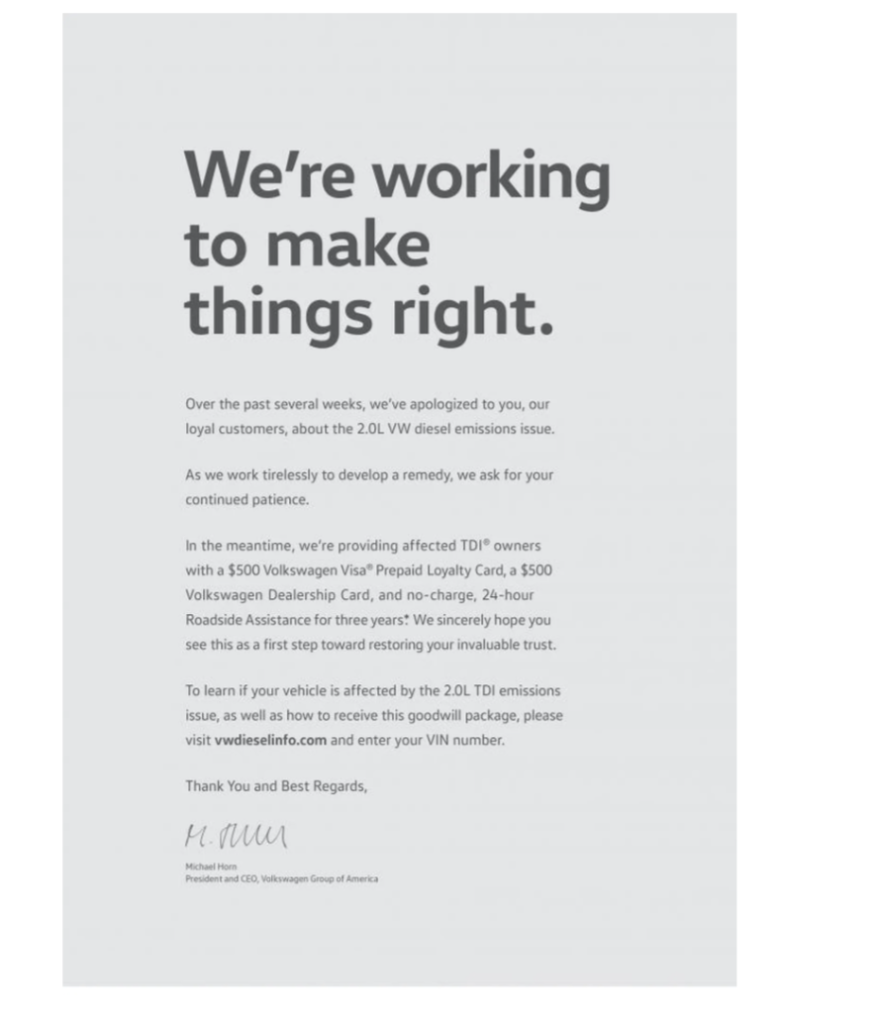
Titled ‘Working to make things right,’ the campaign offered a goodwill package as a first step to regaining customer trust. The package included a $500 Visa gift card, a $500 dealership gift card, and three years of roadside assistance at no charge.
Additional steps included financial investment into electric vehicle development, which later triggered a sharp increase in share prices.
Key takeaway: Again, the road to reputation rehabilitation starts with apologies and ends with fixing the underlying issues.
10. PepsiCo & Kendall Jenner’s controversial ad [2017]
On April 4, 2017, Pepsi Co released an ad featuring model Kendall Jenner. In the ad, Jenner leaves an ongoing photoshoot and joins jubilant scenes of a protest. At the climax, where the protestors meet the police, Jenner defuses the tension by offering a police officer a can of Pepsi.
The campaign aired during the Black Lives Movement protests as a ‘global message of unity, peace, and understanding.’ However, many people, including the daughter of Martin Luther King Jr., criticized the brand for trivializing the real-world experiences of protestors.
The above tweet echoes comparisons between Kendall Jenner and Ieshia Evans, a black woman tackled by riot police during a protest in Louisiana.
Within hours, Pepsi apologised, stating ‘we did not intend to make light of any serious issue,’ and pulled the ad. The brand suffered a significantly damaged reputation.
Public sentiment analysis showed 58.6% negative brand mentions.
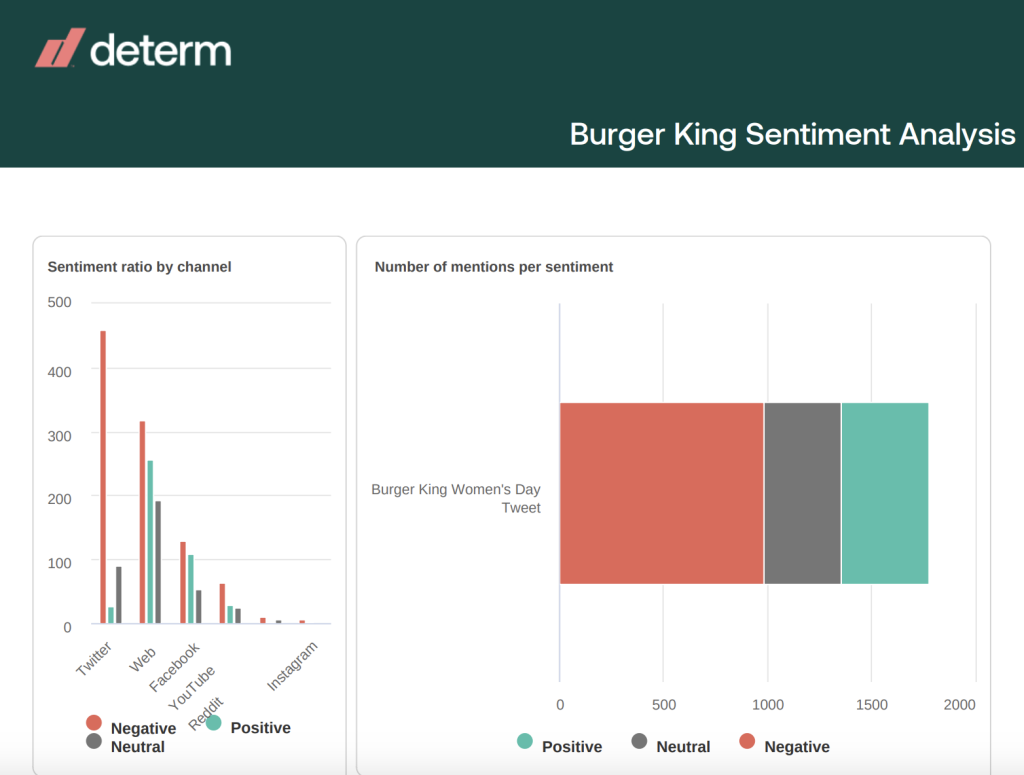
Key takeaway: Don’t wait for too long to acknowledge your mistakes. By immediately apologizing and taking down the ad, Pepsi nipped the crisis in the bud and maintained a favorable brand reputation.
Summing Up
In the world of social media, a brand’s misstep can go viral instantly, with devastating consequences. It is impossible to avoid a PR crisis, but with a crisis plan, you can face one.
Most customers don’t expect companies to be perfect all the time. They do expect them to be accountable when something goes wrong. The worst thing you can do is ignore the problem or delay giving a statement. A well-managed response can turn a bad situation into good PR.
Hopefully, these top PR crises have provided valuable insight into the dos and don’ts of crisis management communication.
By Chris Norton, Founder of Crisis PR agency Prohibition, former University lecturer, author of “Share This Too” and his social media training blog which is listed in the UK’s top 10 PR and social media marketing blogs. For tons of digital PR tips.


